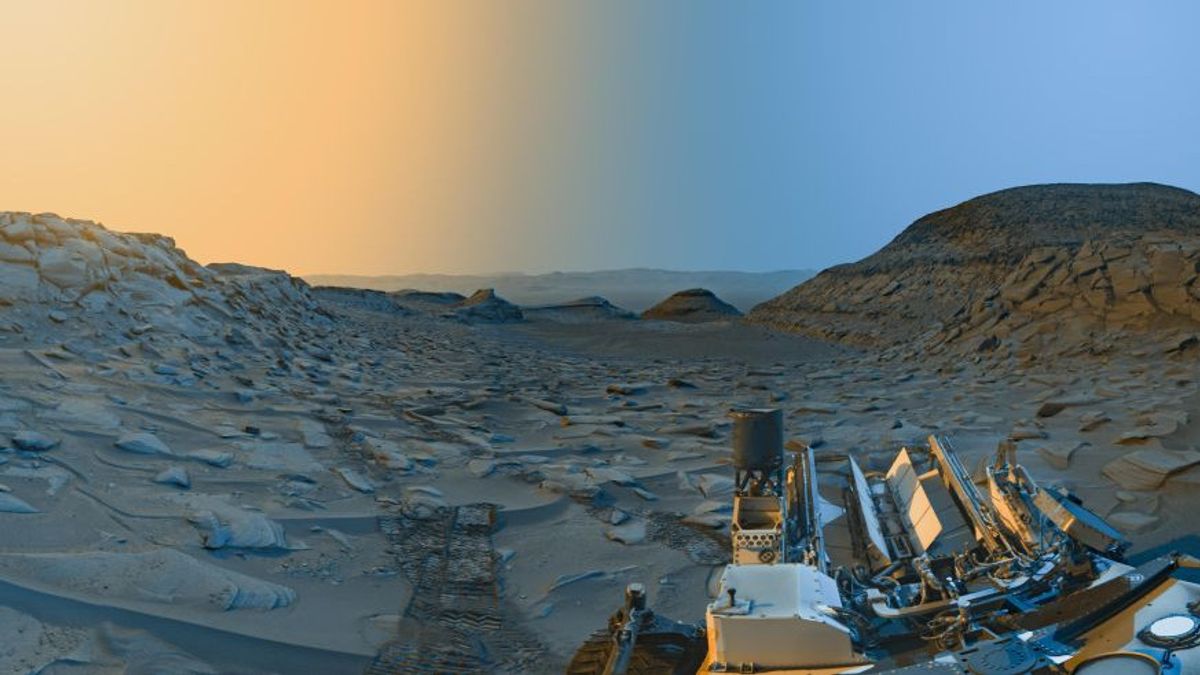JAKARTA - NASA's rover, Curiosity captured the atmosphere when Mars experienced the afternoon and evening, making it a beautiful image for a postcard.
Curiosity is traveling to climb the foot of Mount Sharp which is 5 kilometers high in Gale Crater, Mars.
In early April, Curiosity was forced to halt its journey as NASA sent a large software update to improve its driving capabilities.
At that time, the rover took two combined pictures from the Band Valley Marker, namely a winding area in an area containing sulfate.
There, the rover found unexpected signs of an ancient lake. Further below, there are two Bolturvar and Deepdale hills, which Curiosity has gone through while exploring the Paraitepuy Pass.
Furthermore, the image was taken on April 8 at 09.20 and 15.40 local Mars time using its black-and-white navigation camera.
Furthermore, researchers on Mars added colors to the combination of the two panoramas for artistic interpretations of the scene, providing very different lighting.
另请阅读:
In the picture, there are blue colors taken in the morning and yellow added to the parts taken in the afternoon, just like the similar images taken by Curiosity in November 2021.
When NASA researchers added to the depth of the shadow, it was seen that it was winter at the site where the images were taken, a lower period of airdust.
Mars' show is becoming sharper and deeper as it is less dust and softer when it has a lot of dust, said Curiosity engineer Doug Ellison of NASA's Jet Propulsion Laboratory (JPL), who planned and processed the image, quoted Monday, June 19.
In the image, researchers can peer past the back of Curiosity, providing a glimpse of three antennas and their nuclear power sources.
Likewise with the Radiation Assessment Detector (RAD) on Curiosity, which appears as a white circle at the bottom right of the image, can help researchers learn how to protect the first astronauts to be sent to Mars from radiation on the planet's surface.
The English, Chinese, Japanese, Arabic, and French versions are automatically generated by the AI. So there may still be inaccuracies in translating, please always see Indonesian as our main language. (system supported by DigitalSiber.id)


















